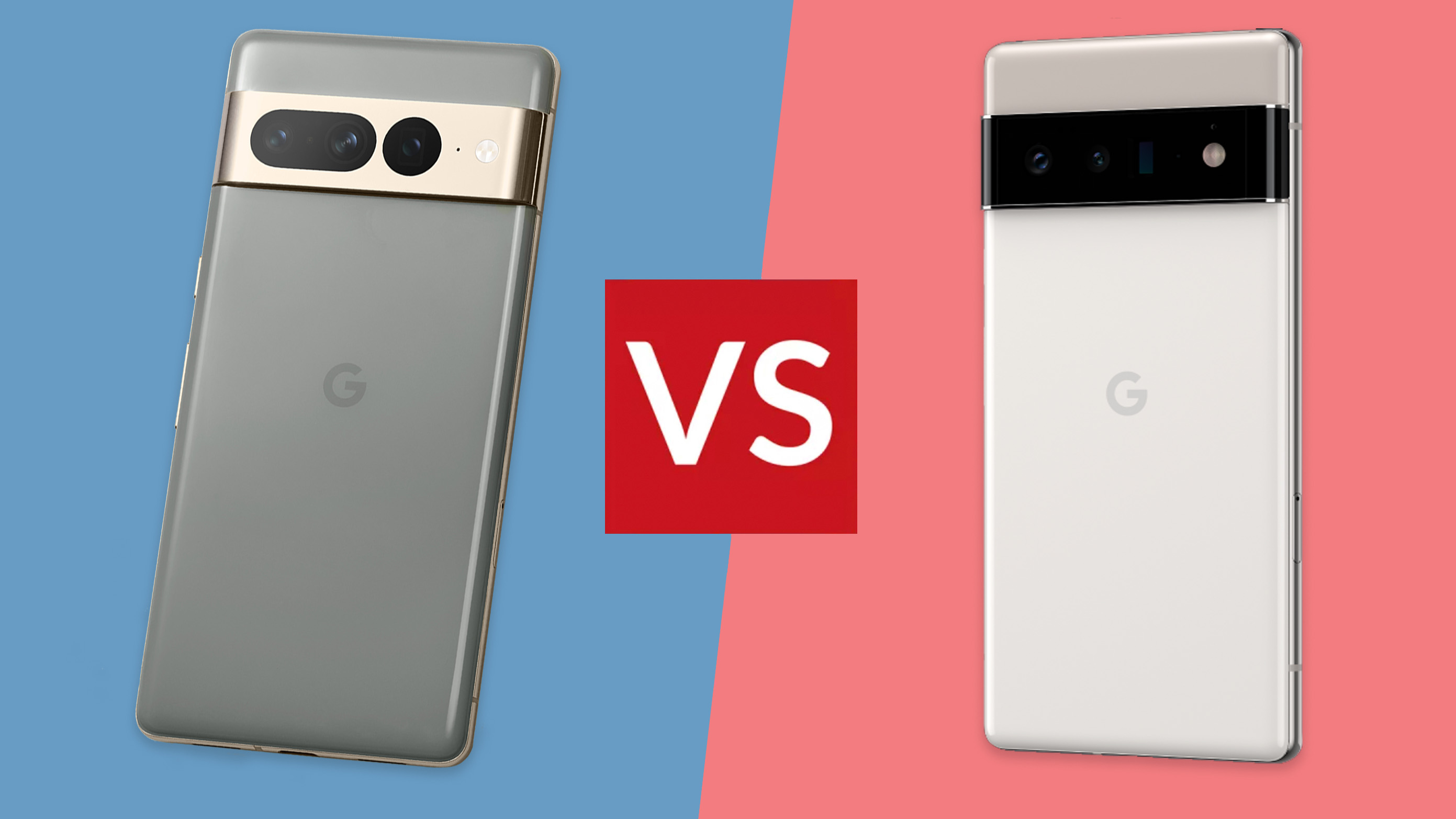Google Pixel 7 Pro vs Pixel 6 Pro: What's the difference?
Google's 2022 flagship, the Pixel 7 Pro, is here with upgrades over last year's Pixel 6 Pro – but what's new?

At Made by Google (event recap here), the second major 2022 Google launch event after May's Google I/O, the company revealed its new phones and wearables products. Principle among which is the Google Pixel 7 Pro, the latest flagship, which updates its Pixel 6 Pro predecessor in a number of ways.
Although the hardware won't launch until 13 October, so a full week after the announcement, if you're pondering whether a pre-order is worth it – particularly from the angle of a Pixel 6 Pro upgrader (the standard Pixel 7 versus Pixel 6 compared here) – then let me take you through the key differences between the two Pixel Pro handsets and what's new in the Pixel 7 Pro in particular.
Pixel 7 Pro vs 6 Pro: Price
When the Pixel 6 Pro launched in late October 2021 it came with a £849/$899/AUD$1299 asking price. Which, given the glut of four-figure flagship phones out there at the time, made it pretty great value.
The Pixel 7 Pro's price is – and I'm almost shocked by this – exactly the same price at launch: £849/$899/AUD$1299. That's impressive given the current market, as even Apple's iPhone 14 saw a price increase in the UK and Australia due to weak market conditions against the US Dollar.
You can check out T3's Google Pixel 7 Pro deals feature to see what's up for grabs. The pre-order bundle – with Pixel Watch and Pixel Buds Pro – is available at a cut-price deal, for example, if you want to bag the full range.
Pixel 7 Pro vs 6 Pro: Colours
The Pixel 7 Pro comes in three colours: Obsidian (black), Snow (white), Hazel (sorta greyish), meaning it doesn't get the Lemongrass (yellow-green) finish of the standard Pixel 7.
You'll probably also notice that Google has got a lot more 'serious' about its naming conventions (well, not entirely: its Japanese promotion transformed those four finishes into actual boxes of crisps), because the Pixel 6 Pro came in the more playfully-named Cloudy White, Sorta Sunny, or Stormy Black.
Get all the latest news, reviews, deals and buying guides on gorgeous tech, home and active products from the T3 experts
Pixel 7 Pro vs 6 Pro: Design
The Pixel 7 Pro is almost identical in terms of size to the Pixel 6 Pro. The newer handset is a millimetre less tall and almost a millimetre wider, which I suspect you won't notice whatsoever as you'd need some advanced machine to measure for that.
Pixel 6 Pro dimensions and weight: 163.9 x 75.9 x 8.9mm / 210g
Pixel 7 Pro dimensions and weight: 162.9 x 76.6 x 8.9mm / 212g
In terms of actual finish it's a similar story between the two, both using Gorilla Glass and aluminium frames. The Pixel 7 Pro, however, has a single piece aluminium enclosure, including the camera bar, that's also made from 100 per cent recycled content.
Both handsets are IP68 dust- and water-resistant too.
And it would be remiss of me not to mention the Pixel 7 Pro's inclusion of Face Unlock on the font camera. That's a feature that's long been rumoured, complementing the fingerprint option for easy sign-in and security.
Pixel 7 Pro vs 6 Pro: Display
The reason the Pixel 7 Pro and Pixel 6 Pro are so similar in size is because they use precisely the same screen: both feature a 6.71-inch AMOLED panel with 1440 x 3120 pixels of resolution across the 19.5:9 aspect ratio.
Also expect 120Hz fast refresh, and support for HDR10+ high dynamic range, meaning super-bright content viewing is possible on either handset. So if you were hoping for a big screen upgrade then, well, the only key difference is the Pixel 7 Pro's 25% brighter output.
Pixel 7 Pro vs 6 Pro: Processor
The Pixel 7 Pro features Google's latest Tensor G2 chip, while the older Pixel 6 Pro features Google's previous-gen Tensor chip.
The key difference is process: Tensor G2 is 4nm, while the original Tensor is 5nm; meaning the newer chip should bring speed and battery gains.
Pixel 7 Pro vs 6 Pro: Cameras
At a glance the Pixel 7 Pro's and Pixel 6 Pro's camera specifications look much the same: both feature a 50-megapixel main camera, a 48MP telephoto, and a 12MP ultra-wide lens.
So what's the main difference? The Pixel 7 Pro's zoom is 4.8x, up from 4x, delivering a 120mm equivalent zoom; its ultra-wide is even wider-angle, too, delivering 125-degrees, up from 114-degrees.
A key new Pixel 7 Pro feature is Macro Focus. This, as the name suggests, allows for close-up focusing at up to just 3cm from the lens.
There's also been an increase to Super Res Zoom: the Pixel 7 Pro offers 30x compared to the Pixel 6 Pro's 20x.
Face Unblur also gets a boost, with Photo Unblur now available to try and get any photo sharper.
Worth the upgrade?
So is the Google Pixel 7 Pro an epic upgrade over the Google Pixel 6 Pro? As you can see from the information above, it's a fairly gentle generational shift, introducing a new and more powerful processor, a new finish, and marginally upgraded cameras.
I look forward to reviewing the Pixel 7 Pro, though, as I suspect its mixture of design, finish, Android 13, and solid cameras are likely to make it one of the best Android phones of 2022. Sure, if you can get a great cut-price Pixel 6 Pro deal then that may tempt you, but for me it's got to be about Pixel 7 Pro in Hazel.

Mike is T3's Tech Editor. He's been writing about consumer technology for 15 years and his beat covers phones – of which he's seen hundreds of handsets over the years – laptops, gaming, TV & audio, and more. There's little consumer tech he's not had a hand at trying, and with extensive commissioning and editing experience, he knows the industry inside out. As the former Reviews Editor at Pocket-lint for 10 years where he furthered his knowledge and expertise, whilst writing about literally thousands of products, he's also provided work for publications such as Wired, The Guardian, Metro, and more.
